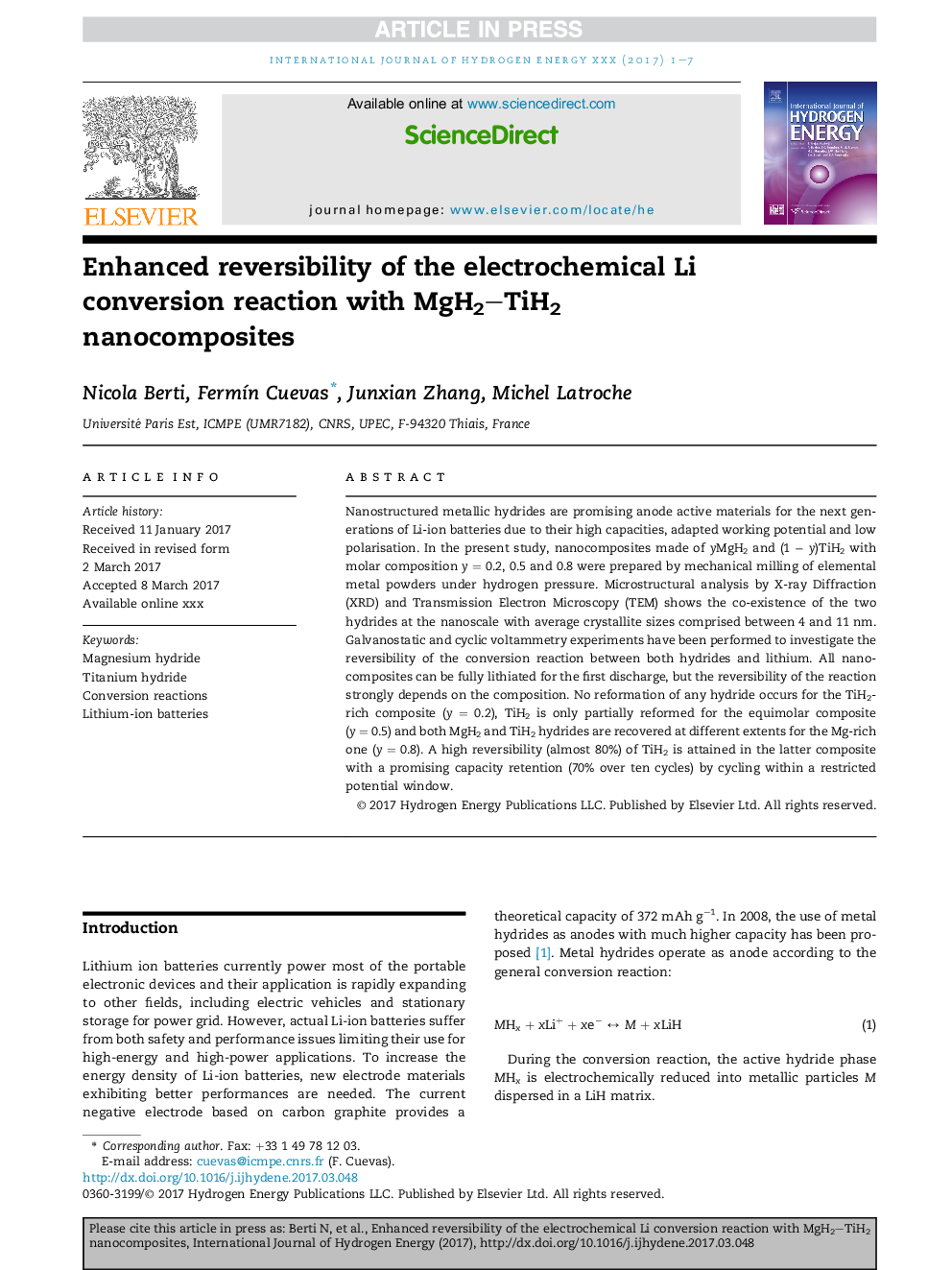| Article ID | Journal | Published Year | Pages | File Type |
|---|---|---|---|---|
| 5145499 | International Journal of Hydrogen Energy | 2017 | 7 Pages |
Abstract
Nanostructured metallic hydrides are promising anode active materials for the next generations of Li-ion batteries due to their high capacities, adapted working potential and low polarisation. In the present study, nanocomposites made of yMgH2 and (1 â y)TiH2 with molar composition y = 0.2, 0.5 and 0.8 were prepared by mechanical milling of elemental metal powders under hydrogen pressure. Microstructural analysis by X-ray Diffraction (XRD) and Transmission Electron Microscopy (TEM) shows the co-existence of the two hydrides at the nanoscale with average crystallite sizes comprised between 4 and 11 nm. Galvanostatic and cyclic voltammetry experiments have been performed to investigate the reversibility of the conversion reaction between both hydrides and lithium. All nanocomposites can be fully lithiated for the first discharge, but the reversibility of the reaction strongly depends on the composition. No reformation of any hydride occurs for the TiH2-rich composite (y = 0.2), TiH2 is only partially reformed for the equimolar composite (y = 0.5) and both MgH2 and TiH2 hydrides are recovered at different extents for the Mg-rich one (y = 0.8). A high reversibility (almost 80%) of TiH2 is attained in the latter composite with a promising capacity retention (70% over ten cycles) by cycling within a restricted potential window.
Related Topics
Physical Sciences and Engineering
Chemistry
Electrochemistry
Authors
Nicola Berti, FermÃn Cuevas, Junxian Zhang, Michel Latroche,
